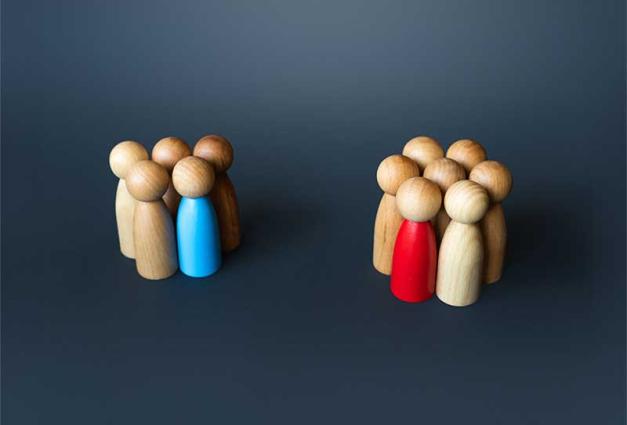In a widely publicized study, John Gottman, an American relationship researcher and counselor, observed that happier couples showed far more positive than negative emotions during conflict discussions. In their interactions, the couples who were still together many years later all had something in common: They balanced each episode of negative emotions during their encounter with around 5 times the number of positive emotions. This pattern was so remarkably consistent that Gottman and other researchers have called this high ratio of positive to negative emotions "the magic ratio."
But how universal is this "magic" across the world? That is what we wanted to know in our study.
Our Couples Study
In order to answer this question, we set up a study that was very similar to Gottman's: We invited ordinary couples to discuss a topic that they were currently disagreeing about. However, in contrast to Gottman, who had used only American couples, we conducted our study in two very different countries: Belgium and Japan.
The couples from both countries were middle-aged, romantic couples, who had been together for a long time, an average of 15 years. Each couple had 10 minutes for their discussion, during which they were filmed. After the couple's time was up, we asked each partner to watch the discussion with their partner again, and to rate how positive or negative they had felt at every moment. In a final step we then established the ratio of positive and negative feelings for each couple.
More Positive Feelings in Belgian than Japanese Couples
Even though the couples discussed topics of disagreement in their relationship, they only reported negative feelings in one out of 5 seconds. Couples in both cultures more frequently felt not-negative: either positive or "neutral." Belgian couples had more frequent positive feelings during their discussion than Japanese couples, whereas Japanese couples had more frequent neutral feelings than Belgian couples.
Also, positive feelings were generally more frequent than negative feelings for couples of both countries, but this was much more the case in Belgian than in Japanese couples. For every second of negative feelings, Belgian couples experienced an average of 20 seconds of positive feelings, while Japanese couples experienced an average of only 4 seconds of positive feelings.
What is the "Magic" Ratio in Belgian and Japanese Couples?
In sum, Belgian couples reported more positive feelings to every second of negative feelings than Japanese couples. But are the "magic ratios" that are required for better, more satisfying relationships different for Belgian and Japanese couples?
In both cultures, satisfied couples felt positive for a larger proportion of time than less satisfied couples. But, for highly satisfied Belgian couples, this ratio of positive to negative emotions was much higher than for Japanese couples: happy Belgian couples experienced 33 times more positive than negative feelings, whereas happy Japanese couples only experienced 8 times more. Thus, the "magic ratio" was very different across cultures.
And what is more, the magic ratios were achieved in different ways. Satisfied Belgian couples attained the "magic" ratio by having both more frequent positive and less frequent negative feelings than less satisfied couples. In contrast, satisfied Japanese couples attained the "magic ratio" of their culture by having merely less frequent negative feelings than less satisfied couples; they did not show more frequent positive feelings.
Good Relationships in a Globalized World
Our findings show how important culture can be for our understanding of close relationships—an idea that has often been largely overlooked in both relationship research and counseling. John Gottman's research on the ratio of positive to negative emotion episodes is widely described as the "magic formula" to having better relationships, kickstarting self-help books, counseling approaches, and research programs. Yet, our work shows that we should be cautious when giving self-help advice to people in other cultures. Depending on where you come from, what it means to be happy as a couple can take on very different forms.
For Further Reading
Kirchner-Häusler, A., Boiger, M., Uchida, Y., Higuchi, Y., Uchida, A., & Mesquita, B. (2022). Relatively happy: The role of the positive-to-negative affect ratio in Japanese and Belgian couples. Journal of Cross-Cultural Psychology, 53(1), 66-86. https://doi.org/10.1177%2F00220221211051016
Mesquita, B. (2022). Between us: How cultures create emotions. W. W. Norton & Company.
Mesquita, B., Boiger, M., & De Leersnyder, J. (2016). The cultural construction of emotions. Current Opinion in Psychology, 8, 31-36. https://doi.org/10.1016/j.copsyc.2015.09.015
Alexander Kirchner-Häusler is a Postdoctoral Research Associate in the ERC-funded HONORLOGIC project at the University of Sussex. His work explores the many ways in which our cultural background shapes our self-views, relationships, and interactions with others, as well as how fitting in with one's cultural environment may be linked to better psychological well-being.
Batja Mesquita is a Distinguished Professor of Psychology at the University of Leuven, Belgium, and the author of Between Us: How Cultures Create Emotions. Her work explores the role of emotions in relationships across cultures in many different parts of the world, as well as how learning the emotions of a new cultural context may form an important gateway to the social inclusion and well-being of immigrant minority individuals.




